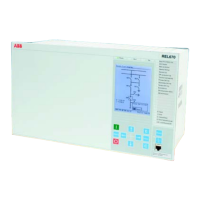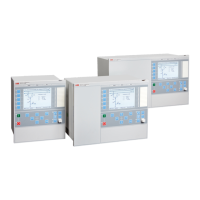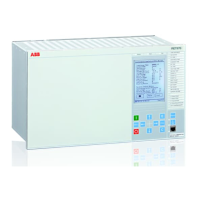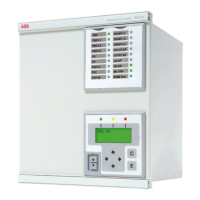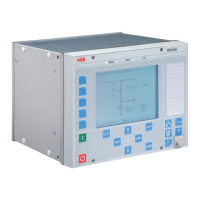Trip signal issuing requires that the rate-of-change of frequency condition
continues for at least the user set time delay, tDelay. If the START condition, with
respect to the measured frequency ceases during the delay time, and is not fulfilled
again within a user defined reset time, tReset, the START output is reset, after that
the defined reset time has elapsed. Here it should be noted that after leaving the
hysteresis area, the START condition must be fulfilled again and it is not sufficient
for the signal to only return back into the hysteresis area.
The RESTORE output of SAPFRC is set, after a time delay equal to the setting of
tDelay, when the measured frequency has returned to the level corresponding to
RestoreFreq, after an issue of the TRIP output signal. If tRestore is set to 0.000 s
the restore functionality is disabled, and no output will be given. The restore
functionality is only active for lowering frequency conditions and the restore
sequence is disabled if a new negative frequency gradient is detected during the
restore period, defined by the settings RestoreFreq and tRestore.
9.3.6.3 Blocking
M14970-23 v6
Rate-of-change frequency protection (SAPFRC) can be partially or totally blocked,
by binary input signals or by parameter settings, where:
BLOCK: blocks the START and TRIP outputs
BLKTRIP: blocks the TRIP output
BLKREST: blocks the RESTORE output
If the measured voltage level decreases below the setting of IntBlockLevel, both the
START and the TRIP outputs are blocked.
9.3.6.4 Design
M14970-34 v7
Rate-of-change frequency protection (SAPFRC) measuring element continuously
measures the frequency of the selected voltage and compares it to the setting
StartFreqGrad. The frequency signal is filtered to avoid transients due to power
system switchings and faults. The time integrator operates with a definite delay
time. When the frequency has returned back to the setting of RestoreFreq, the
RESTORE output is issued after the time delay tRestore, if the TRIP signal has
earlier been issued. The sign of the setting StartFreqGrad is essential, and controls
if the function is used for raising or lowering frequency conditions. The design of
SAPFRC is schematically described in figure
156.
Section 9 1MRK 506 382-UEN A
Frequency protection
312 Line distance protection REL650 2.2 IEC
Technical manual
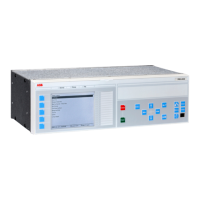
